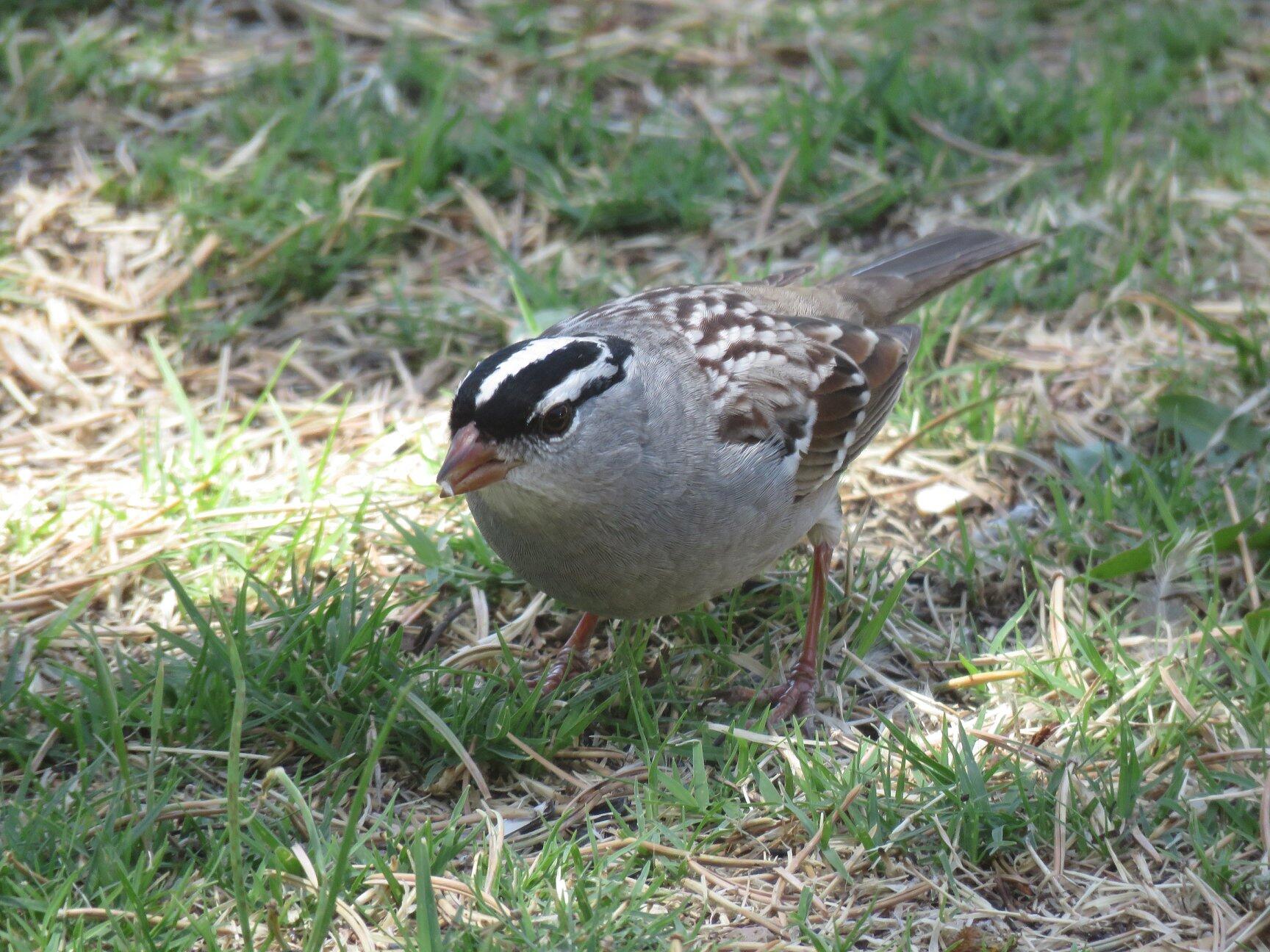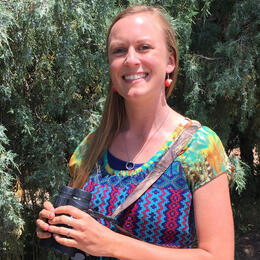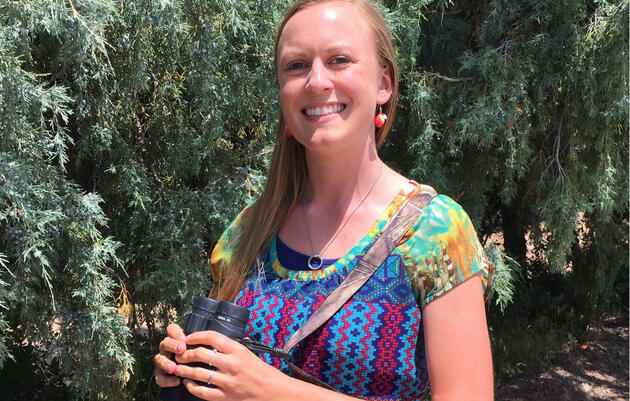I saw my first Sandhill Crane of the season last weekend. These winter residents are practically celebrities around here – they even have their own festival at Bosque del Apache National Wildlife Refuge which hosts over 100 crane-centric events and draws thousands of visitors from all over the world. Soon cranes will be here by the thousands, along with innumerable Snow Geese and a host of other waterfowl species.
I’m enjoying watching the White-crowned Sparrows hop-scratch in my front yard– their recent arrival is a sure sign of winter. White-crowned Sparrows, like many of our winter residents, breed in the Arctic tundra and high alpine meadows. When birds fly south for the winter, they’re not necessarily heading towards some warm tropical destination. Many species are simply avoiding the harshest of northern conditions and are perfectly happy spending the winter in places like New Mexico, even though we often experience below-freezing temperatures and weeks-long snow cover.
Scientists have long been fascinated by the topic of migration. How do birds know when to migrate? Environmental cues dictate almost every aspect of bird behavior, including migration. The timing of migration is controlled mainly by changes in daylight length, or photoperiod. Photoperiod affects plant and insect communities as well, especially in temperate regions where the difference between summer and winter can be quite drastic. As days get shorter and summer comes to a close, plants die back, insects disappear, and migratory birds head for greener pastures. In the spring as days get longer, plants bloom and insects emerge and our familiar summer friends return to find a mate and raise their young.
One consequence of climate change is the decoupling of these events – some species no longer arrive at their breeding grounds when insects are at peak abundance. Most birds feed insects to their growing nestlings, but when food is in short supply, not as many young survive to adulthood. For short-lived species, a few years of low breeding success can cause a dramatic population crash. Recent studies indicate that some species are more plastic in their migration patterns, and are shifting their spring arrival date by as much as two weeks. But what about species that aren’t as adaptable? And what if climate change is simply happening too quickly for even the most adaptable of species?
Audubon New Mexico is working to increase climate resiliency to ensure that all birds have the habitat they need when they need it – now and in the future. The Rio Grande, New Mexico’s Ribbon of Life, provides critical breeding, stopover, and wintering habitat for millions of birds every year, and we are successfully finding ways to ensure that both people and wildlife can not only coexist, but thrive here. Our expanding Freshwater Conservation team is leading the way for environmental water leasing projects that will keep water in the river where it is needed the most – a first for New Mexico. We are collaborating with local landowners and land managers to ensure that agricultural land and wildlife habitat remains resilient even in a warmer future. And we are growing our partnerships with local conservation groups who have already been working along the Rio Grande for decades, because we are stronger when we work together. Please send me an email at amy.erickson@audubon.org if you want to learn more about our Rio Grande work, or if you have any questions about birds in general.








